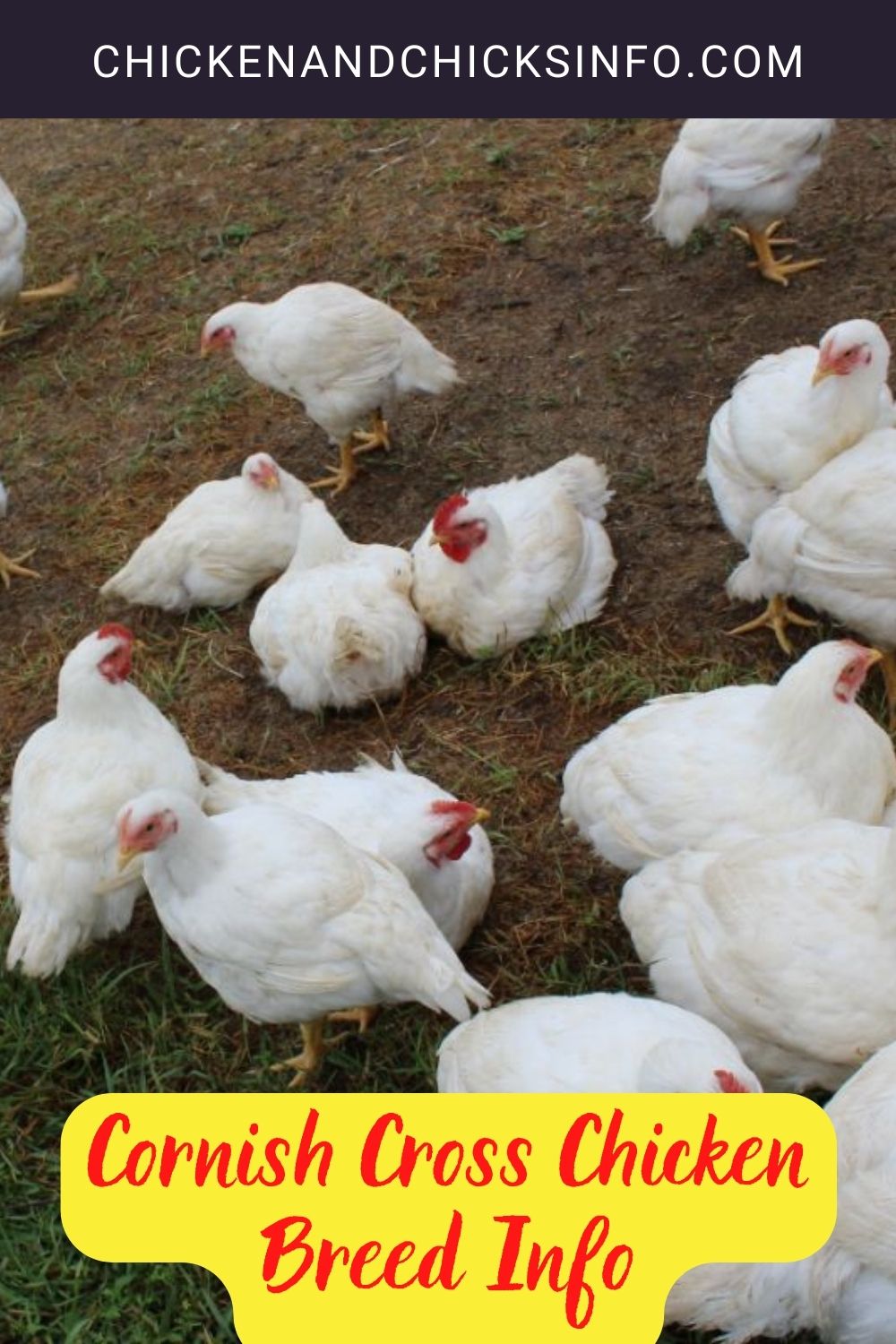This hybrid is a cross between a commercial Cornish chicken and a white rock chicken.
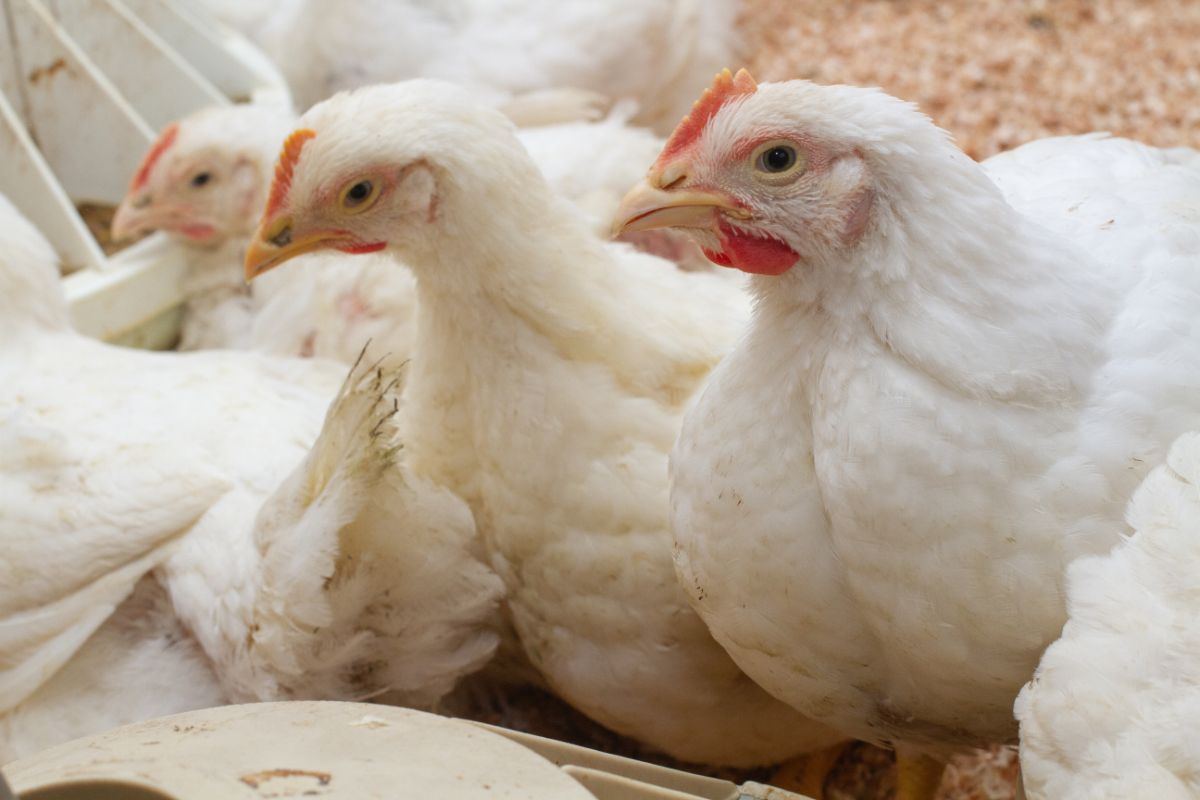
They are the most popular and widespread meat-producing chicken in the United States - when you buy chicken at the grocery store, it is most likely a Cornish Cross.
These broiler chickens are beloved for their rapid growth and feed efficiency. When it comes to their feed conversion rate, it takes about 2-3 lbs. of feed for each pound of meat. Pullets generally take a few weeks longer to reach butcher weight than cockerels.
Keep in mind these are hybrids, so breeding them will not result in the same quality of chicken. They will also be too large to breed when they reach sexual maturity, which is why they are not used for egg production.
Jump to:
How to Buy Online Cornish Cross Chickens

Jumbo Cornish Cross Chicks As low as: $2.95 - Read reviews
Jumbo Cornish Cross Hatching Eggs As low as: $3.84 - Read reviews
Cornish Cross Chicken Breed Quick Info
Cornish Cross Chicken Description
| Cornish Cross Type/Size: | Hybrid |
| Feather Color: | White |
| Leg Type: | Clean |
| Leg Color: | Yellow |
| Skin Color: | Yellow |
| Cornish Cross Ease of Raising/Keeping: | Difficult |
| Cornish Cross Special Care Needs: | Yes |
| Is the Cornish Cross breed a common, rare, or protected breed of chicken? | Common |
Cornish Cross Use
| Meat | Yes |
| Eggs | No |
| Dual Purpose | No |
| Cornish Cross Temperament: | Calm, docile |
| Cornish Cross Ability/Likelihood to Free Range: | No |
Cornish Cross Egg Production
| Egg Color | N/A |
| Egg Size | N/A |
| Estimated Number of Eggs Per Year | N/A |
| Likeliness to Brood Eggs/Raise Chicks | N/A |
Cornish Cross Meat Production
| Dressed Weight Male | 7 lbs. |
| Dressed Weight Female | 5 ½ lbs. |
Cornish Cross Climate Tolerance
| Heat | Poor |
| Cold | Poor |
Cornish Cross Age to Maturity
| Number of Months to Reach Full Size | N/A |
| Number of Months to Start Egg Laying | N/A |
| Number of Weeks/Months to Reach Meat Harvest Size | 8 Weeks |
Cornish Cross Size at Maturity
| Male | 10 lbs. |
| Female | 8 lbs. |
Origins of the Cornish Cross Chicken
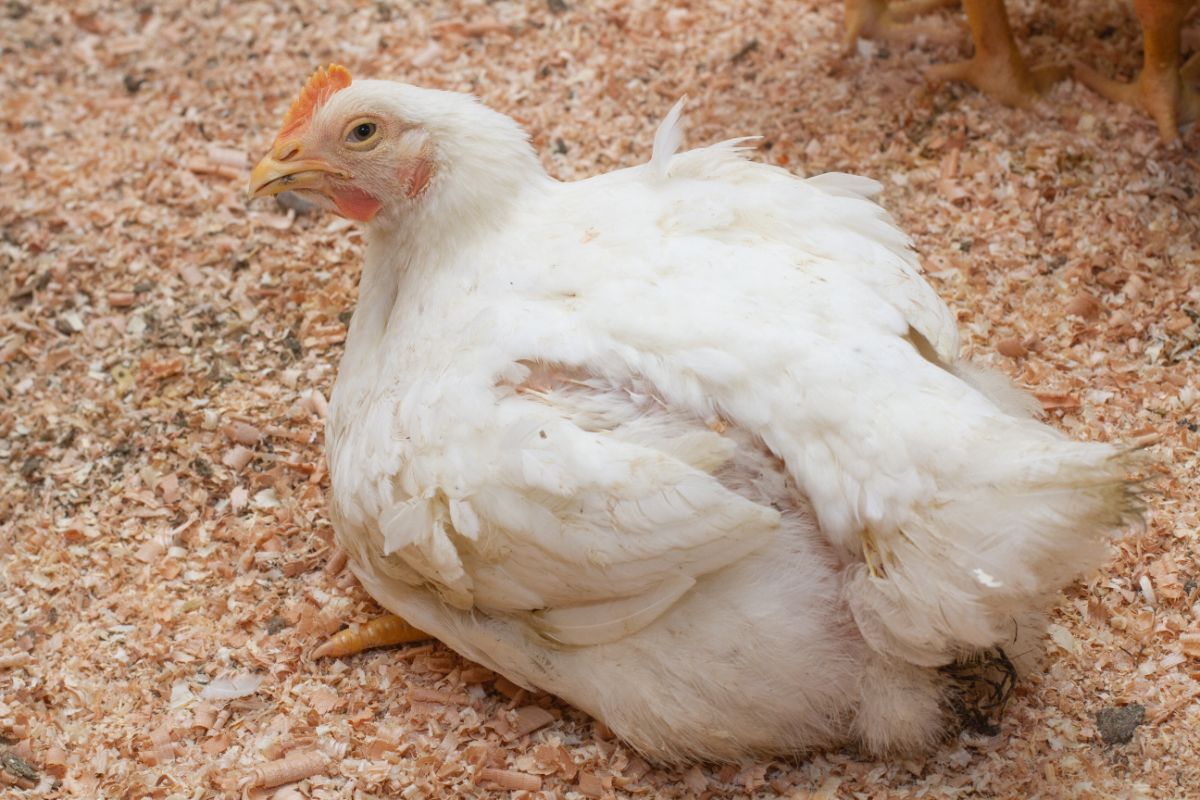
The Cornish Cross revolutionized the chicken industry in the United States.
Before this cross was developed, chicken used to be an expensive meat that was saved for special occasions. The Cornish Cross’ fast, efficient growth made chicken meat much more accessible and cheaper.
Celia Steele of Delaware is credited with starting the meat chicken craze, which led to the creation of the “Chicken of Tomorrow” contest. Two winners from this contest were used to develop the Cornish Cross: a White Plymouth Rock and a Red Cornish Cross.
Some Things to Know About the Cornish Cross Chicken
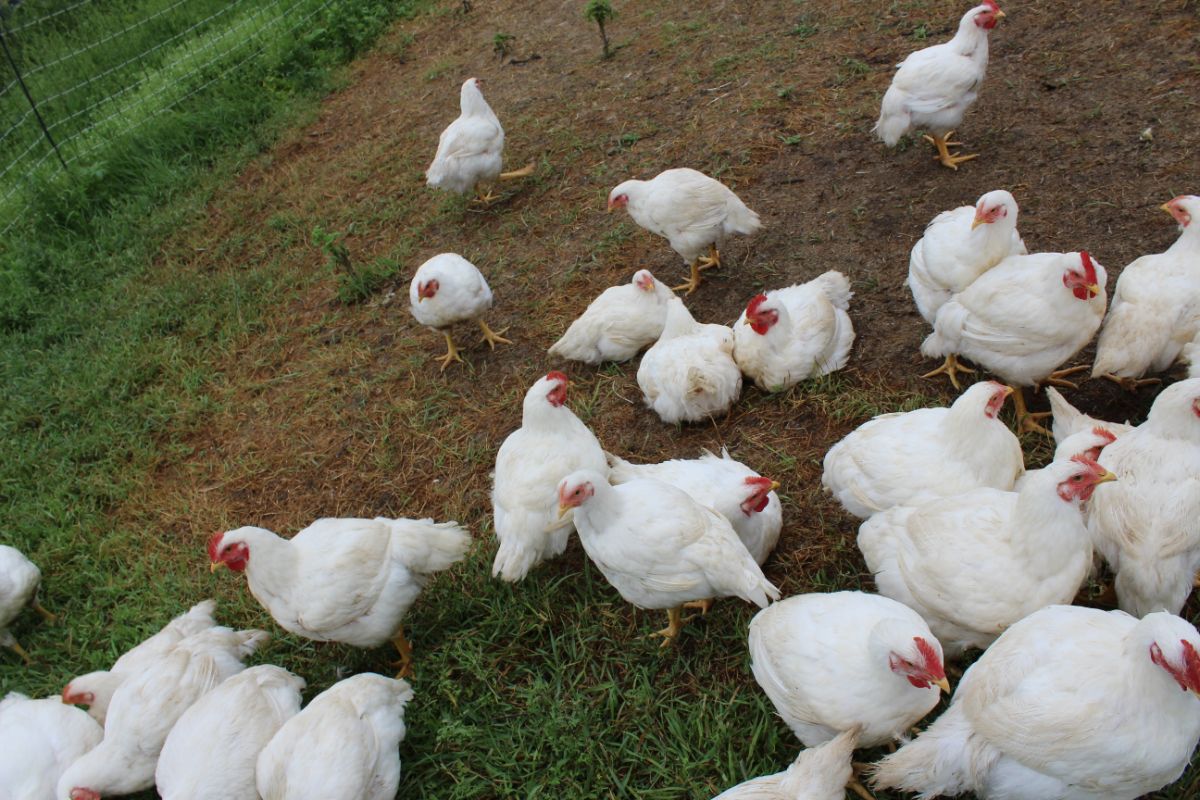
There are three main commercial strains of Cornish Cross chicken: the Cobb 500, Ross 708, and Ross 308. All three have a muscular build, white plumage, and yellow legs and skin. However, there are a few key differences:
Cobb 500: This strain may have black flecks throughout its plumage and has a rounder appearance.
Ross 708: This strain has a balanced distribution of meat throughout its body with a slightly smaller breast. They grow more slowly than the other strains but catch up by the end of their growth cycle. You may see Ross 708s referred to as “Cornish Rocks.” They are best for dark meat.
Ross 308: This strain and the Cobb 500 are often referred to as “Jumbo Cornish Crosses.” They are known for their broad breasts.
How Easy is it to Keep Cornish Cross Chickens?
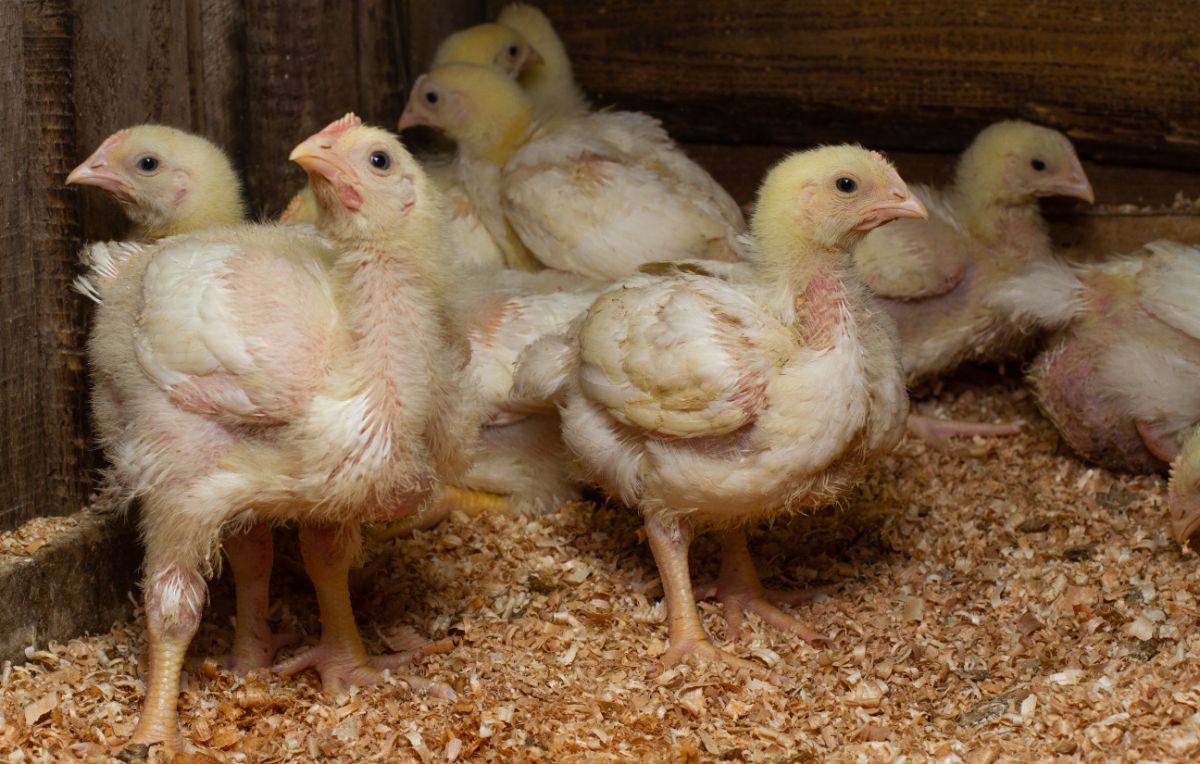
The Cornish Cross is not your typical backyard chicken. If you plan to keep them on your homestead or in your backyard, you’ll need to learn all about raising commercial broilers. Here are a few key points:
- They grow extremely fast. These chickens should be butchered no later than 10 weeks of age. If they are allowed to grow past that, they will continue to gain weight rapidly and could die of a heart attack. They are not designed to reach sexual maturity or lay eggs.
- This breed will eat too much food if they have access to it. They also drink more water than other breeds.
- Cornish Crosses require confinement and need at least 3 square feet per bird. They are poor free-range birds and will not forage even if given the opportunity to. Often, they will wait for you to fill their feeder rather than seek food out.
- As meat birds, they need a high protein diet, which unfortunately results in smelly poop. And since they consume so much feed, there will be a lot of it to clean up.
- Cornish Crosses are considered very high maintenance because they require daily feeding, fresh water, and coop cleaning, but luckily this work only lasts for about 8 to 10 weeks!
Special Care and Considerations for Cornish Cross Chickens
Cornish Cross chickens have many special considerations to be aware of if you plan to raise them. As mentioned above, they are a very labor-intensive and fragile breed of chicken. Here are a few rules to follow when caring for Cornish Crosses:
- It is not recommended to keep Cornish Crosses at altitudes above 5,000 feet. This can cause them to have heart attacks and trouble breathing.
- They should have their feed restricted after the first few weeks of life so that they don’t overeat.
- Exercise can be a good way to prevent health issues as they grow. You can use a run or enclosed barn to let them walk around and get some movement in throughout the day.
- This breed is NOT a good free-range bird. Their large size makes them slow and clumsy, which means they are vulnerable to predators.
- Cornish Crosses are not particularly hardy. They don’t handle hot or cold climates well.
- Finally, make sure you have enough freezer space because these are large birds.
